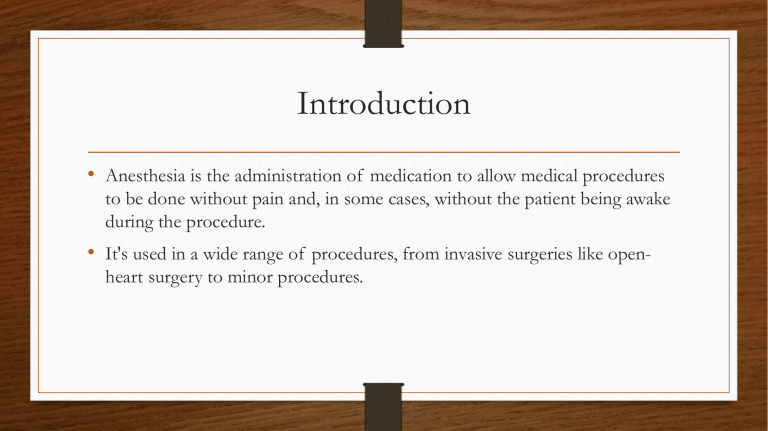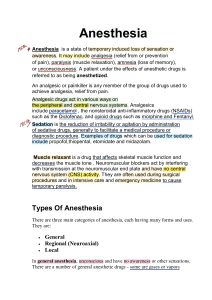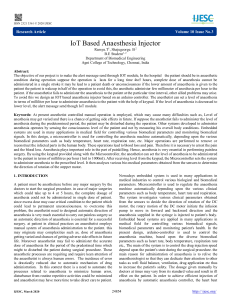
Introduction • Anesthesia is the administration of medication to allow medical procedures to be done without pain and, in some cases, without the patient being awake during the procedure. • It's used in a wide range of procedures, from invasive surgeries like openheart surgery to minor procedures. Types of anaesthesia • General anaesthesia • Regional anaesthesia • Local anaesthesia General anesthesia • General anesthesia is a state of controlled unconsciousness during which patient feel • • • • nothing. In general anesthesia patient will have no memory of what happens when she/ he was under anaesthetized. A general anesthetic is required for a very wide range of operations. This includes most major operations on the heart, lungs or in the abdomen, and many operations on the brain or the major arteries. Anesthetic drugs are injected into a vein, or through inhalation. The GA works by stopping the brain from responding to sensory messages travelling from nerves in the body. Regional Anesthesia • Regional anesthesia is a type of anesthesia which numbs a large part of the body, such as from the waist down. • The medication is delivered through an injection or catheter and is used when a simple injection of local anesthetic is not enough, and when it’s better for the patient to be awake. Type of anesthesia. • spinal blocks and • epidurals, is often used for childbirth. • The epidural is the most common used for labor and delivery. It allows the mother to be awake and able to push when it’s time to deliver the baby, but numbs the pain. • A spinal block — is stronger and is used during procedures such as cesarean deliveries. • Spinal blocks and epidurals allow the surgical deliver the baby without causing pain to the mother, and without subjecting the baby to sedating drugs that might be harmful. Local anaesthesia • his type of anesthesia is typically used to numb a small site for minor procedures, such as filling a cavity or for a skin biopsy.






